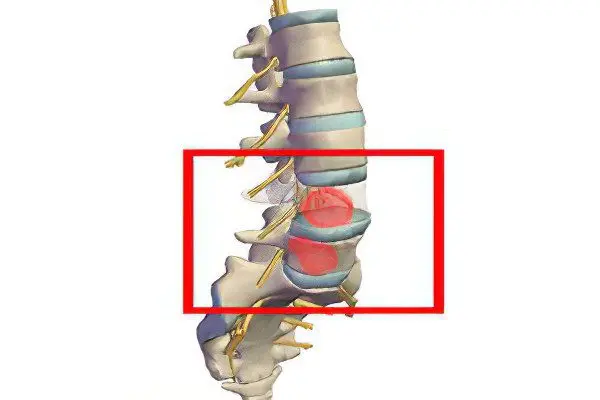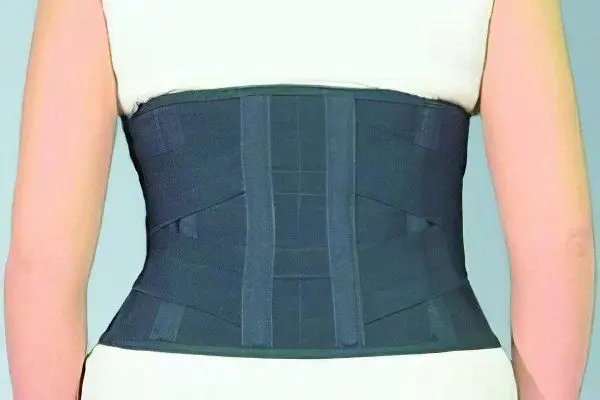Contents
What is a compression fracture of the spine?
A compression fracture of the lumbar spine is an injury to the bone structures as a result of their compression. Most often, it is this part that suffers, so it takes on the maximum load.
The mechanism of injury is that the structural elements of the lumbar region, in which there are five vertebrae, are damaged as a result of a pressure load. It is the body of the vertebra that undergoes a fracture. When viewed in section, the vertebrae looks like a wedge or triangle. Its top is directed forward, and the base is turned back, towards the spinal canal. The main danger of a compression fracture is that the broken part of the vertebra can move further and damage the spinal cord.
This is a fairly common injury, despite the fact that in the normal state, bone tissue has high strength. But its limit is not unlimited.
There are several degrees of compression fractures of the lumbar spine, depending on their severity:

1st degree fracture is determined when the height of the vertebra decreases by no more than 1/4 of its initial size;
2st degree fracture – this diagnosis can be heard when the segment has decreased by one third;
3st degree fracture characterized by a decrease in the vertebra by more than half.
Sometimes a compression fracture can occur in an uncomplicated, latent form. Pain will bother a person with an injury, but not too much. In the initial stages, the victim may not go to the doctor. The danger of this type of fracture is in its consequences – osteochondrosis and sciatica. In all other cases, the pain is so pronounced that the person immediately seeks help.
The cause of the injury is either that a huge pressing force was directed to the lumbar spine, or that it was already subject to certain degenerative changes. In the latter case, an extra heavy load is not required. A fracture occurs when falling from a height, in an accident, when jumping, etc. A disease that leads to spinal injury even without a significant load is osteoporosis. It affects older women more often.
Signs of a compression fracture of the spine
Symptoms that allow us to say that a person has received a spinal injury:
If the fracture occurred as a result of a sharp blow, then the victim will begin to experience severe, sharp pain, which at the time of injury will be localized in the lumbar spine. After it is almost instantly transmitted to the lower limbs;
Weakness will quickly increase, a feeling of numbness of the back, legs or arms will appear. This is because there was a complete rupture of the nerve fibers, or their damage;
There may be dizziness;
Sometimes, immediately after an injury, regardless of whether the brain was hit or not, a person may experience paralytic ileus. This symptom is characterized by the fact that there are no gases and stools, while the stomach swells, a feeling of nausea and even vomiting may appear;
Traumatic shock is not always observed, but may be one of the signs of a compression fracture;
If a compression fracture of the lumbar spine is the result of a slowly progressing pathology, then the pain is quite tolerable. They become stronger gradually, in the process of further deformation of the spine. Often these patients have multiple fusion of the vertebrae that have broken more than once. As a result – the formation of a hump;
If the injury is very serious, it can lead to paralysis not only of the limbs, but of the entire lower body.
Fracture of the lumbar vertebrae

The lumbar region consists of five vertebrae, each of which can be injured. Sometimes the fracture affects several segments, sometimes only one. The localization of painful sensations will depend on which vertebra is damaged. If the last and fourth vertebrae are damaged, the person will experience pain in the lower back with a transition to the groin. If the vertebrae located above are injured, the pain will be concentrated in the lumbar region, but with irradiation to the upper body.
Fracture of 1 lumbar vertebra
The first lumbar vertebra is the most vulnerable, and most often the destruction of its nominal body occurs. Therefore, doctors call this place the “critical point.” If the fracture is not complicated by spinal cord injury, and treatment was started on time, then the prognosis for a full recovery is quite favorable.
Since the greatest load falls on the first vertebra, it suffers more often both in injuries caused by osteoporosis and in injuries due to strong mechanical impact.
Fracture of 2 lumbar vertebra
As for the second vertebra, it suffers a little less than the first, but still quite often. This is because the load on it is almost as high as on the element located above.
With a decrease in the vertebral body by more than half, segmental instability is observed. That is, if the second vertebra is severely damaged, this will entail “looseness” of the entire segment. Hypermobility will be characteristic of both the first and third vertebrae. If left untreated, this condition will lead to further destabilization of the upper and lower back.
Fracture of 3 lumbar vertebra
The third vertebra is not as often subject to compression fractures as the first and second. This is due to its location. Most often, the third vertebra is injured as a result of a direct blow exactly at the place where it is localized.
Treatment takes place in a hospital. Depending on the severity of the injury, surgery may be required. Inadequate therapy for a fracture in this area threatens with spondylopathy, instability, and the occurrence of chronic pain.
Fracture of 4 lumbar vertebra
The fourth vertebra breaks as rarely as the third. Most often, cracks form in his body, but fractures are also sometimes observed. They are usually the result of compression when the second and third vertebrae are damaged.
Fracture of 5 lumbar vertebra
The fifth vertebra is adjacent to the sacrum and connects to its base. Fracture of the fifth vertebra, as a rule, is observed when falling on the buttocks. In this case, the sacrum itself is also damaged. The pain is predominantly localized in the lumbar region, but often extends to the groin area. Treatment is prescribed by a doctor, depending on the severity of the injury.
Diagnosis of a compression fracture of a vertebra
The doctor can make a diagnosis of “compression fracture” only on the basis of a thorough study of the patient’s condition. This is necessary in order to differentiate the injury from other pathologies that cause pain in the back.
To make a correct diagnosis, you need:
Listen to all the complaints of a person, study the medical history;
Conduct a neurological examination, which includes checking the performance of both the spinal cord and peripheral nerves;
Perform X-ray examination of the spine in lateral and direct projection. This will help clarify which of the vertebrae was damaged;
A CT scan may be ordered to examine the injury in more detail if the x-ray does not give a clear picture;
If there is a suspicion that nerve structures were damaged as a result of a fracture, then an additional MRI is necessary;
If a woman over 50 years old came to the appointment, and she had a confirmed diagnosis of “compression fracture of the spine”, then she is prescribed densitometry without fail. This study will confirm or disprove the presence of osteoporosis.
Treatment of a fracture of the lumbar spine

Most often, surgery is not required, and a compression fracture is treated conservatively.
They may include:
Prescribing medications. Naturally, the victim will be tormented by painful sensations. To relieve pain, the doctor will prescribe him medications, but they will not affect the healing rate in any way. Their intended purpose is pain relief;
physical activity should be reduced as much as possible. Moreover, this applies not only to walking, but also to any position of the body in an upright position – standing or sitting. For elderly patients, bed rest is recommended unambiguously and for a long time, since the fusion process takes longer for them;
For fixation of the lumbar a person suffering from a compression fracture must use a special corset. This orthopedic design will release the spinal column from the load. It is better that the corset be made according to individual sizes;
Vertebroplasty is one of the modern methods of treatment of a compression fracture of the spine and allows you to restore and strengthen the damaged section. During the procedure, the doctor inserts a thin needle into the lower back, through which a special solution then enters. The control is carried out with the help of x-rays. The patient will need a day to recover, then the only limitation is a decrease in motor activity;
Kyphoplasty. The essence of the procedure is that a balloon is inserted into the vertebral body through a couple of incisions. It is inflated to the required size, then bone cement is “poured” into the damaged area. Thanks to this, a reliable fixation of the position of the vertebra occurs, and its dimensions are normalized;
Surgical intervention required when nerve endings have been damaged. During the operation, the doctor removes those elements of the vertebra that pinch the nerves and the back of the brain. Natural bone fragments are replaced with metal implants.
If all recommendations are followed, the prognosis for recovery after a compression fracture of the lumbar spine is favorable, especially if modern methods of treatment are used.









